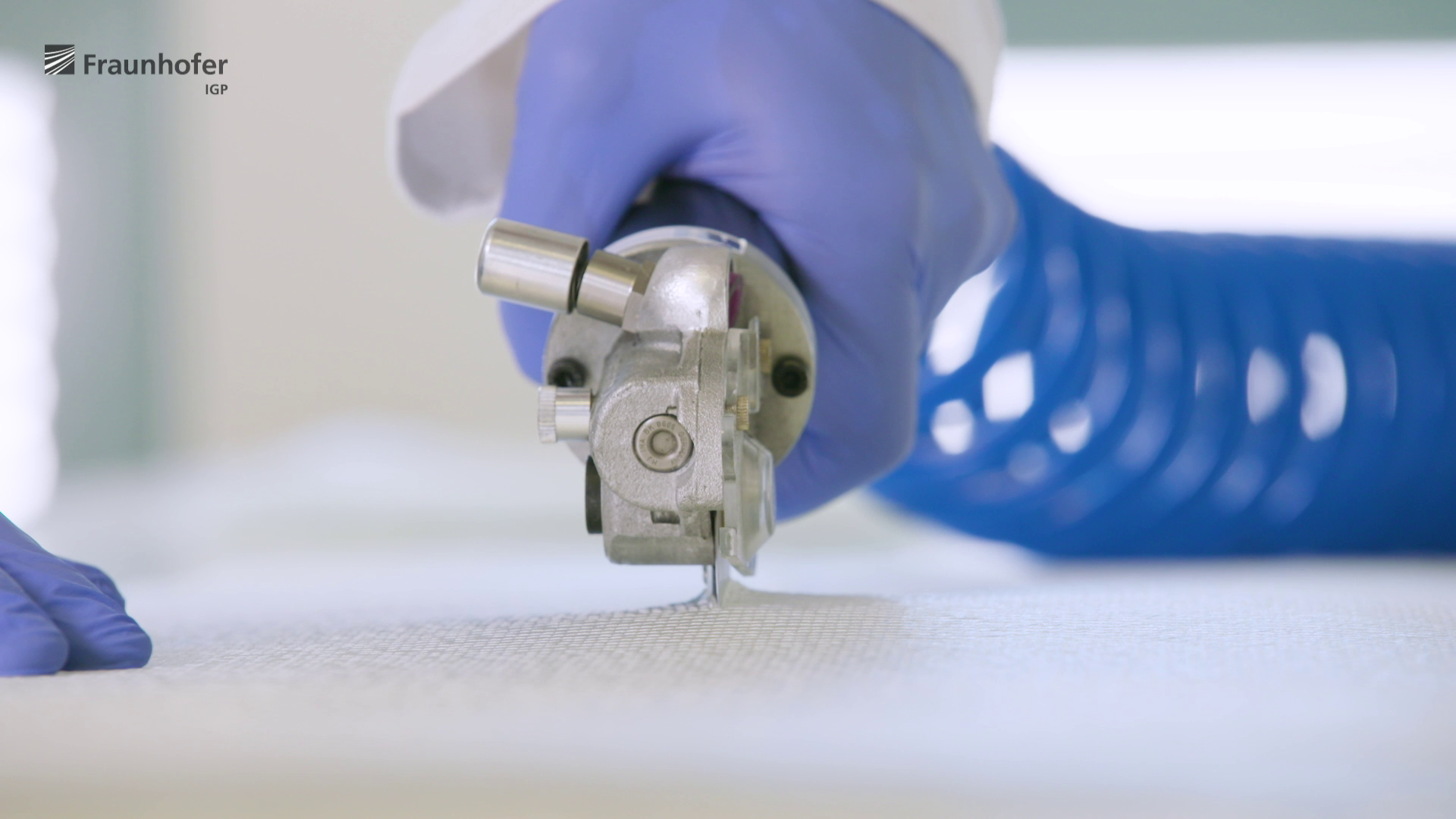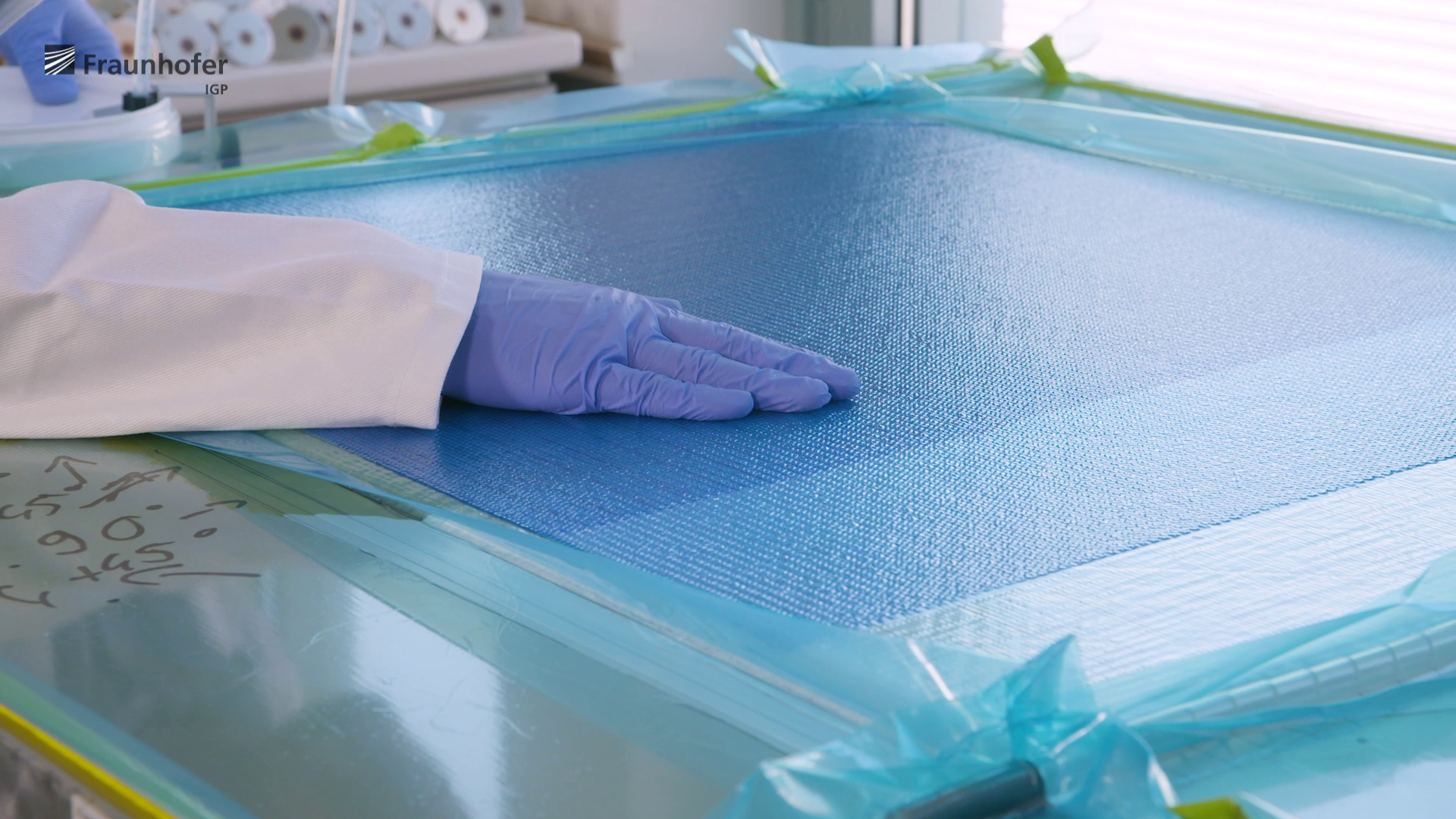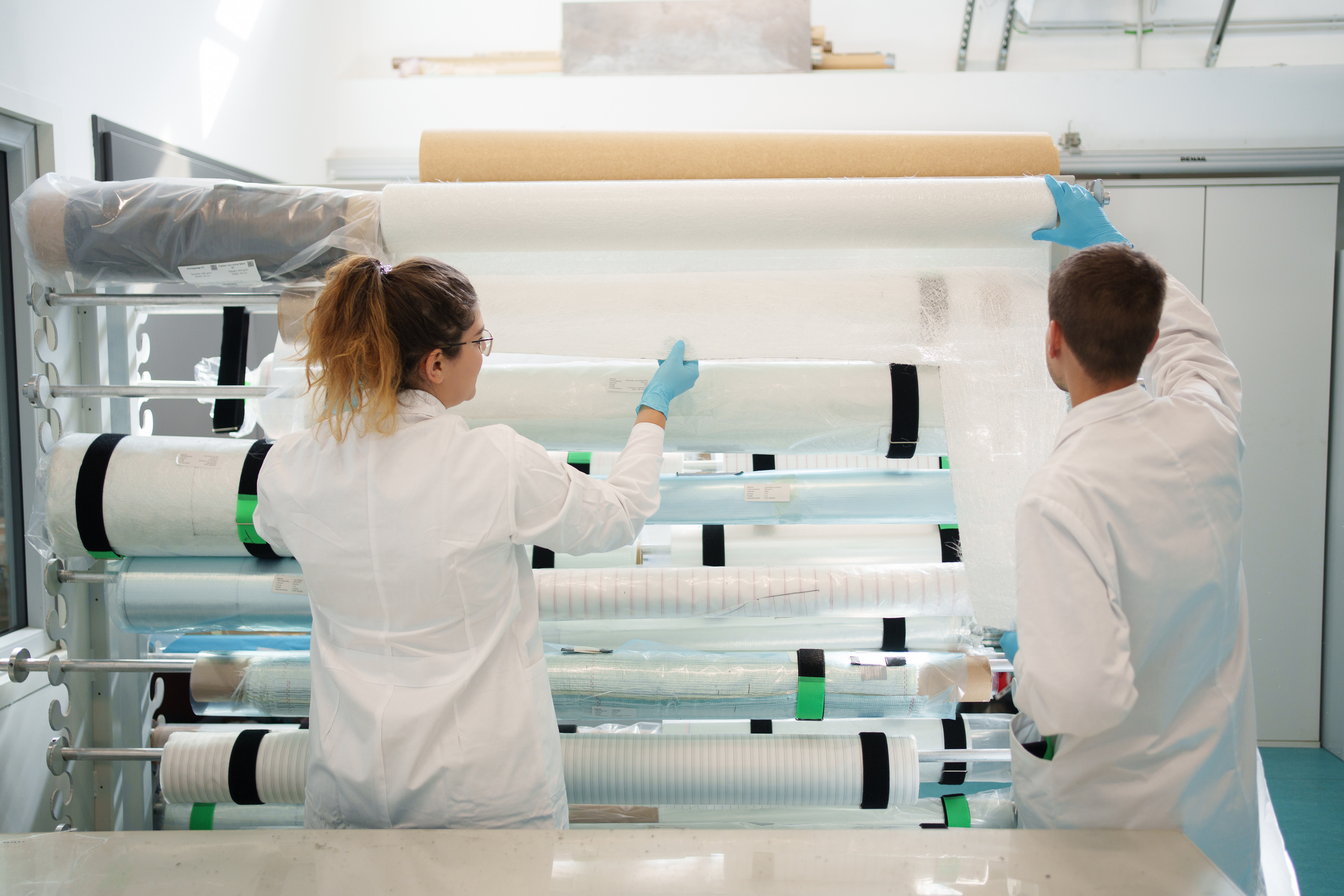Fibre Composite Technologies
Field of Work
The "Fibre Composite Technology" department of the Fraunhofer IGP deals with the holistic optimisation of large fibre composite constructions such as rotor blades of wind turbines, ship superstructures or applications in the building industry.


In the accredited test laboratory of the Fraunhofer IGP, fibre composites, connections and components are tested and qualified under standardised conditions. In addition, new test methods are developed and used for special applications.
The focus in the field of fibre composite technology is on the holistic optimisation of large fibre composite constructions such as rotor blades of wind turbines, ship superstructures or applications in the building industry. The focal points of the work range from the development of innovative fibre composite construction methods and manufacturing processes to the optimisation of manufacturing processes. and the optimisation of manufacturing processes, the qualification of new fibre composite and core materials, and the development of sustainable recycling solutions.
Project overview
Maritime electromobility
System solution for a maritime city shuttle
VP3: Development and construction of a ship structure
The aim of the E2MUT alliance is to develop and introduce emission-free urban mobility solutions on water. In addition to two collaborative projects dealing with infrastructure and propulsion and energy systems, VP3 deals with the development and construction of the ship's structure, which is adapted to the requirements of alternative propulsion systems through a novel design. In five fields of competence, work is being done, among other things, on the development of a fast urban tug for intra-urban areas as well as on modern inland freighters and electric ferries. The ships pave the way for low-emission passenger and commercial transport thanks to innovative multi-hull hull shapes with adaptive foil support, which are made from fibre composite materials using novel manufacturing and joining processes.
LH2 Tanks
New tank concepts for liquid hydrogen
Increasing the storage and transport efficiency for liquid hydrogen in steel fibre composite tanks through thermally sprayed TBC layers
There is currently little experience with the transport of large quantities of liquid hydrogen (LH2) due to the developing market. Tank designs relate to standard onshore storage and transport applications with vacuum-insulated, double-walled austenitic stainless steel structures, which have comparatively high thermal diffusivity and conductivity and increased weight. This currently reduces efficiency due to increased boil-off and unfavourable gravimetric storage density.
New tank concepts are therefore necessary for the maritime production and transport of LH2. Innovative technical approaches from space travel (fibre windings) and for high-temperature applications (thermal barrier coatings "TBC") are being taken up and combined.
Fibre composite insulators
Vibration-resistant fibre composite insulators
Lifetime-optimised support structures for electrical equipment on floating multi-purpose platforms
On floating multi-purpose platforms in offshore wind farms, composite insulators made of glass-fibre reinforced plastic (GRP) are to be used for the storage of electrical components. The electrically non-conductive core of the composite insulators ensures the safe insulation and reliable storage of converter modules, for example. Due to the offshore use of the platforms, the insulators are subjected to increased cyclical loads as a result of external influences such as wind and wave loads compared to stationary use. Based on this problem, existing insulator concepts are analysed and optimised in terms of materials and design. The overall objective is to reliably verify the fatigue strength of the composite insulators by means of a design concept based on analytical, numerical and experimental verification methods.
CFRP-Recycling
Plastics recycling
Disassembly and reuse of carbon fibre-reinforced plastic
Carbon fibre reinforced plastics (CFRP) have been increasingly used in many industries for years. As a result, the amount of CFRP waste materials will increase in the future. Since the production of carbon fibres (CF) is a very energy-intensive process and they are correspondingly expensive, both ecological and economic reasons speak in favour of dismantling the CFRP waste materials and subsequently reusing the CF.
The SolvoCycle research project deals with the use of near- and supercritical fluids for CFRP recycling. This process, known as solvolysis, makes it possible to decompose the plastic matrices of CFRP materials without damaging the fibres. The goals of the project include the recovery of recycled CF and its processing in new CFRP components.
H2 storage systems
Hydrogen storage systems in lightweight construction
Scalable hydrogen storage systems in lightweight construction
Overcapacities in regenerative power generation can be stored in the form of hydrogen after conversion by means of electrolysis. Gaseous pressure storage places high demands on the pressure vessels, which consist of a thermoplastic inner liner and a wound pressure shell made of carbon fibre-reinforced plastic. On the one hand, the research work pursues the improvement of the composition as well as the processing of the thermoplastic liner material in reactive rotational moulding with regard to its mechanical and physical properties. On the other hand, they are concerned with the computational design and optimisation of the geometry of the individual pressure vessel components to reduce stress, especially in transition areas.
Composite materials
Enable use in shipbuilding
Non-combustible, fibre-reinforced composite components based on cold-curing, inorganic matrix systems
The use of composite materials in shipbuilding is in principle extremely promising due to great design freedom, high corrosion resistance and considerable weight savings. However, strict fire protection regulations prevent the use of conventional fibre-reinforced plastic composites (FRP) with organic matrices, which burn in the event of a fire, releasing heat. The solution to the problem is to substitute the plastics with inorganic, non-combustible matrix systems. However, conventional manufacturing processes for FRP cannot be easily transferred to the inorganic materials. The AnorKomp project focuses on the optimisation and processing of inorganic systems as well as processes for the production of corresponding composite components.
Services
- Material tests on fiber composites, plastics and sandwich laminates (quasi-static, cyclic, under temperature)
- Production of laminates and test specimens according to standards and customer specifications
- Instrumented component and part testing
- Development of new test methods for special applications
- Damage analysis (macro/microscopic) and non-destructive component testing (ultrasound, thermography)
- Physical testing (density, FVG) and polymer analysis (DSC, DMA, rheology)
 Fraunhofer Institute for Large Structures in Production Engineering IGP
Fraunhofer Institute for Large Structures in Production Engineering IGP